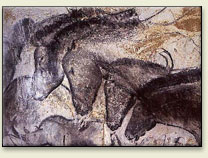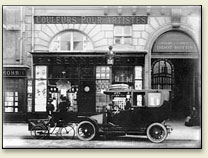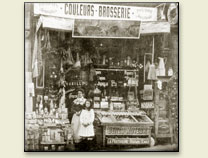Friday, November 6, 2009
Jacquard Textile Colors
These versatile colors are ready for direct application with brush, stamp, squirt bottle, airbrush, or whatever. They are absolutely colorfast on both natural and synthetic fabrics. No special techniques are required. Used straight from the bottle, the colors are intense and semi-opaque.
When diluted with water (or the Extender), these paints have qualities of the best watercolors. Colors can be bright and transparent or light and pastel. All colors are blendable.
Exciter Pack, Textile Traditionals
— Intense colors for beautiful brushed results on natural fabrics. Kit includes ½ oz bottles in 9 colors: Scarlet, Violet, Sky Blue, Turquoise, Apple Green, Goldenrod, White, Periwinkle, and Russet.
Set of 8
— Includes 2¼ oz jars in 8 colors: Yellow, Orange, True Red, Violet, Sapphire, Emerald, Black, and White.
Set of 6
— Includes 8 oz plastic jars in 6 colors: Yellow, True Red, Navy Blue, Emerald Green, Black, and White.
Friday, May 1, 2009
Dye versus Pigment Ink Printers
Not too long ago, only a few exotic desktop inkjet printers used pigment ink. But now that new pigment based models from Canon and HP have joined the lineup of pigment printers resulting from Epson's pioneering efforts, the choice of dye versus pigment ink has become increasingly unavoidable for those shopping for a new printer. If this might include you, which type of ink should you go with?
Traditional dye-based printers use water-soluble colored liquids to render an image on paper. Tiny droplets are laid down that get absorbed by the paper. By contrast, pigment ink is composed of a neutral carrier liquid with suspended colored particles. Whereas dyes are generally derived from organic compounds and deteriorate rapidly when exposed to UV light and other environmental factors, the colored particles used in pigment inks are inert and will require much longer to decompose or fade to any significant degree.
But pigments haven't been a panacea for the creation of inkjet ink. Pigment inks are much more expensive to manufacture as are the print heads used to dispense them. The individual pigment particles are solids yet still have to pass through the tiny picoliter-sized holes in the printer's print head. Early pigment printers had bad reputations for frequent clogging but newer models have mostly solved this potential problem. From the beginning, it was important to allow the print heads to park properly when turning off the printer so they would seat themselves as the engineers intended. Turning off the printer with a switched power strip prevented this from happening and promoted clogs.
It was also challenging for early pigment inks to produce the wide gamut of colors possible when using dyes. A lot of late night hours in Epson's and other printer manufacturer's research labs have improved matters considerably. The inclusion of additional ink colors as well as the use of specialized processes such as resin encapsulation have all but eliminated gamut differences. It used to be that one had to choose between the wider gamut of dye ink versus the improved permanence of pigments, but not any longer.
But the hardest problem for the developers of pigment ink to solve was a phenomenon known as "metameric failure," and explaining it will require a bit of typing. Bear with me if you've heard the term "metamerism" bandied about by printing geeks and want to know what they were taking about, or feel free to skip this part otherwise since this too isn't really much of an issue with current pigment printers.
When we look at an object, we see it as being some particular color. Certain wavelengths of light that fall on it get absorbed and others get reflected to some degree. The average of this response across the visible spectrum determines the color we perceive. The phenomenon wherein two objects with different spectral responses both average out to be the same visible color is known as metamerism. Think of it much the same way that the average of 10 and 20 is the same as the average of 5 and 25. Add them up and divide by two and both sets of numbers average out to 15. The color we see is to that 15 average much as the spectral response is to either of the sets of numbers that go into that average. You can come up with a great many sets of numbers that all average out to 15 just as you can come up with a great many spectral responses that all average out to the same visible color.
That is, so long as the lighting conditions remain constant. If the color temperature or spectral distribution of the light source changes, all bets are off. If a certain wavelength that an object reflects is now present in the light source to a greater or lesser degree relative to other wavelengths, its contribution to the overall color of that object will have changed. What we will see is a color shift, something quite expected since the color of the light changed. If the color of a second object though came from averaging a slightly different spectral response, its color may shift differently from that of first. This is known as metameric failure: two objects that appear to be the same color when viewed under one light source, but appear as different colors under another light source. This is a normal property that we see around us all the time. You go to the department store and buy something because its color matches what you are looking for, but when you take it home, the color turns out to be all wrong. That's because the light source in the store was different than at your house. Car companies love metameric failure since it enables them to develop those new fangled car colors that shift under different lighting. Is that new car blue, or is it green? It's both of course, depending on the light source.
So how does metamerism fit in with inkjet printing? Basically because it affects pigment ink far more than it does dye based ink. While dye ink soaks into the paper, pigment ink dries on the surface and does not absorb since the color is a solid. If the individual particles of pigment are not completely uniform, they can end up laid down differently across the page and will thus reflect light differently. And unlike dye inks, pigment granules don't mix together when wet on the page so any differences in spectral uniformity will contribute to metameric shifts.
Thankfully, continued research has yielded improvements in manufacturing techniques that have all but eliminated metamerism as an issue with pigment ink. While all this does cost money, the increasing adoption of digital photography has caused the inkjet printer market to explode and nothing helps drive costs down as does sales volume. If photographic printers were still selling in the low numbers they did only a few years ago, they would have to cost a lot more in order to pay for all that R&D. The sheer number of us photographers trying to print at home is what has made this desktop printing thing affordable. And high tech pigment inks and printers are the result. While the ink and print heads do cost more to develop, those costs are spread among much greater numbers of printers than they once were.
My first pigment printer was the original Epson 2000P back in the year 2000. I suppose that's why they named it that now that I think about it. When printing on archival paper, its output was rated to last up to 200 years without fading. At the time, all the available dye-based inkjets were doing good to last even six months. Printing on the 2000P with the supplied ICC profiles though was an exercise in frustration both from the limited gamut and the issues with metamerism. It wasn't until I spent money on custom profiles that I was able to get results I was satisfied with. But once I did I was hooked. It was great knowing (and being able to tell customers interested in buying prints) that they would stay looking as good as they did when they came out of the printer for years to come. Since then I've upgraded printed more than once, but always to a new pigment ink model. Printer manufacturers have made strides in producing more stable dye inks, but for truly professional results, pigment inks are the way to go.
Article From:- ( earthboundlight.com/phototips/dye-pigment-metamerism.html )
Thursday, April 23, 2009
DIGITAL PIGMENT PRINTING
PIGMENT PRINTING
Friday, April 17, 2009
KOLORJET CHEMICALS INDIA
Pigments
Copper phthalocyanine blue is the copper (II) complex of tetra aza tetra benzoporphine (CPC) whereas Phthalocyanine green is its chlorinated derivative (Pigment green 7). The brominated derivative of CPC provide a yellowish green shade(Pigment green 36).
The specific crystal modification decide the hue of the product as in Alpha blue - red shade copper Phthalocyanine (Pigment Blue 15) and in Beta blue - green shade blue (Pigment Blue 15:3). The Alpha modification which is phase stabilised by partial chlorination called solvent stable alpha blue or Pigment Blue15:1.
The Alpha modification which is stabilised towards flocculation and the phase change are registered as Pigment Blue 15:2. These pigments find use in paints.
The details of the individual class of pigments together with its application is given separately.
Monday, April 13, 2009
History of Acrylic Paints
Acrylic Paint
Acrylic Paint is fast-drying paint containing pigment suspended in an acrylic polymer emulsion. Acrylic paints can be diluted with water, but become water-resistant when dry. Depending on how much the paint is diluted (with water) or modified with acrylic gels, mediums, or pastes, the finished acrylic painting can resemble a watercolor or an oil painting, or have its own unique characteristics not attainable with other media.
Friday, April 10, 2009
Alizarin (Pigment)
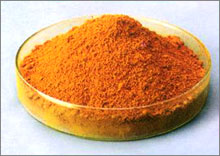
Detailed Description
Sunday, April 5, 2009
Iron Oxide Pigments
 Iron oxide and hydroxide minerals occur in a variety of colours and have been used as pigments since prehistoric times. In France and northern Spain, cave paintings using iron oxide pigments have been dated at ~30 000 years and, in Australia, Aborigines mined ochre which was transported throughout the continent via an extensive nationwide trade network. Wilgie Mia red ochre deposit in the Weld Range, Western Australia, is a well-documented example, and the Bookartoo red ochre deposit in the northern Flinders Ranges is a local example of past Aboriginal mining activity.
Iron oxide and hydroxide minerals occur in a variety of colours and have been used as pigments since prehistoric times. In France and northern Spain, cave paintings using iron oxide pigments have been dated at ~30 000 years and, in Australia, Aborigines mined ochre which was transported throughout the continent via an extensive nationwide trade network. Wilgie Mia red ochre deposit in the Weld Range, Western Australia, is a well-documented example, and the Bookartoo red ochre deposit in the northern Flinders Ranges is a local example of past Aboriginal mining activity.
The principal pigment minerals are:
- haematite,Fe2O3 (red)
- magnetite,Fe3O4 (brown to black)
- goethite,
 FeOOH.xH2O (yellow)
FeOOH.xH2O (yellow) - lepidocrocite,
 FeOOH.xH2O (yellow).
FeOOH.xH2O (yellow).
Impurities such as manganese, clay and organics enhance the colour range of natural iron oxide pigments. Umber, for example, is a dark brown manganese-rich variety.
The chemical industry has developed a wide range of synthetic iron oxide pigments with superior uniformity, colour quality and chemical purity, but natural deposits remain competitive for many applications by virtue of their abundance and low extraction costs.
The principal use of pigment is as a colouring agent in paint, concrete products, building materials, ceramics and paper. Micaceous or specular haematite is a crystalline variety with a platy mica-like habit which finds extensive use in paint for external applications such as bridges, where its lamellar, anticorrosive properties are more important than its colour.
World production is estimated at ~0.4 Mt/year. Significant Australian resources include the Mount Gould micaceous haematite deposit in Western Australia with estimated reserves of 117 000 t, and yellow and brown ochres at Savage River, Tasmania, with reserves estimated at 72 000 t.
South Australian deposits
Micaceous haematite
 Micaceous haematite platelets in a milled sample fraction from Mount Mystery |
The Mount Mystery micaceous haematite deposit, ~50 km northeast of Marla, occurs as a discontinuous outcrop up to 8 m wide with a strike length of 450 m. It was emplaced along a fault separating late Adelaidean sediments from overlying Cambrian Wallatina Formation. In outcrop it is massive, hard and blue. Proven reserves are 30 000 t. A small open-cut development begun in 1995 has yielded 77 t to date.
At Warrakimbo, 90 km northeast of Port Augusta, dolomite of the Adelaidean Etina Formation hosts pods of massive micaceous haematite over a strike length of several hundred metres. These appear to have formed in a fault zone by replacement of a carbonate host. The bulk of the ore occurs in Main Lode which has a strike length of 45 m and maximum thickness 6.5 m. A bulk sample of 676 t, removed for metallurgical testwork in 1977, is the only recorded production. Beneficiation tests have shown the resultant micaceous iron oxide to be of high grade and to meet specifications for the manufacture of rust-resistant paints.
The Koraleigh micaceous haematite prospect, 6 km north of Kersbrook, occurs as a discontinuous unit with a strike length of 680 m and maximum width of 6 m. Calculated resources are 192 000 t at 46.5% Fe2O3. It is of sedimentary origin and has a simple mineralogy of ill-sorted detrital quartz and micaceous haematite.
Ochres
Yellow and red ochres have been mined from the oxidised zone of Adelaidean and Cambrian sediments at a few localities in the Flinders and Mount Lofty Ranges. The total recorded production of 4060 t was intermittent and ceased in 1953. The largest production came from the Copper King Mine, 16 km north of Beltana, where yellow, brown and red ochres were mined from an oxidised zone to 30 m depth. The ore occurs as irregular seams, pockets and veins in an ironstone developed on massive siderite. Yellow and golden ochres were won from ironstone bodies to a depth of 10 m at the Maltese Cross Mine near Oodla Wirra. Yellow ochre was mined from the Mount Sienna ochre mine, 5 km north of Birdwood; the ochre here occurs as a ferruginous gossan developed over a pyrite body and was mined to a depth of 25 m from veins and seams up to 1.5 m wide.
Several deposits of carphosiderite (hydrous iron sulphate) have been worked in the ‘Boolcoomata’ district, ~25 km north of Olary. Small parcels were gently roasted and processed to produce a red ochre.
Nickeliferous ochre has been identified at Claude Hills in the Musgrave Block. Drilling has outlined irregular bodies within ultramafic masses of Giles Complex basic igneous host rocks. Resources have been estimated at 6 Mt.
Many small resources of dark blue-grey and red haematite in the Middleback Range may be suitable as pigment or for processing into pigment.
Friday, April 3, 2009
EARLY PIGMENTS
| For millennia, humans have beautified their world and expressed their thoughts by painting. Over the years, paintings have been made on virtually every imaginable surface. The common characteristic is that paint consists of ground up pigment in some sort of liquid. When the liquid dries into a film, the ground pigment is stuck to the painting surface. The first paintings were cave paintings, such as those pictured at right. Ancient peoples would decorate walls of protected caves with paint made from dirt or charcoal mixed with spit or animal fat. In cave paintings, the pigments (often carbon black or ochre) stick to the wall partially because the pigment gets trapped in the porous wall, and partially because the binding media (the spit or fat) dries, adhering the pigment to the wall. Over the years, countless graves unearthed by archaeologists exposed bodies covered in red pigment or chunks of pigment buried alongside bodies. Red, associated with blood, the most life-sustaining of a bodily fluids. was the appropriate color to symbolize life's meaning and end. The word hematite (the source of many iron oxide pigments) is derived from the Greek word, hema meaning blood. Prehistory Prehistoric dwellers may have discovered that unlike the dye colors derived from animal and vegetable sources, the color that came from iron oxide deposits in the earth would not fade with the changing environment. For this reason, it is estimated that men traveled long and far to maintain a steady supply of red pigment. In every locality where prehistoric sites were discovered, from Texas to South Africa, trails lead to near and far hematite deposits where man mined. It has even been deduced that the impetus behind all mining activities was sparked by prehistoric man's need for red pigment. Combining their expertise, art historians and conservators used examination, chemical analysis and ethnographical (cross-cultural) comparison to hypothetically reconstruct the artistic materials and techniques of the cave dweller. It is assumed that all the colors used by Paleolithic artists have a foundation of mineral oxide (either iron or manganese) or carbon. Their limited palette was produced from three basic colors: red, black and yellow. Reds, yellows, and browns came from the limonites and hematites (ochres and siennas), where a range from reddish brown to straw color is evident in the paintings. Shades of red-violet and mauve were perhaps the product of natural peroxide of iron transformed slowly and naturally into violet oxide. Blacks were derived from manganese ores and charcoal. Excavations in the Lascaux area prompted speculation that cave dwellers traveled as far as 25 miles to obtain ion oxide pigments The oxides of iron dug right out of the ground in the form of lumps were presumably rich in clay. This consistency was conducive to the formation of crayon sticks and also could be made into a liquid paste more closely resembling paint. It is believed the lumps were ground into a fine powder on the cave's natural stone hollows where stains were observed. Shoulder and other bones of large animals, stained with color, were discovered in the caves and presumed to be used as mortars for pigment grinding. The pigment was made into a paste with various binders, including water, vegetable juices, urine, animal fat, bone marrow, blood and albumen. Historians hypothesize that paint was applied by brushing, smearing, dabbing and spraying techniques. Large areas were covered with fingertips or pads of lichen or moss. Twigs produced drawn or linear marks, while feathers blended areas of color. Brushes made from horse hair were used for paint application and outlining. Paint spraying, accomplished by blowing paint through hollow bones, yielded a finely grained distribution of pigment, like airbrush. Iron oxide pigments constituted the basic palette of ancient artisans, from Egypt to India and China. The Minoans, attributed with inventing the fresco, mixed their pigments with water and applied them to a fresh lime surface. The technique, called buon fresco, requires pigments that bond permanently to lime. Iron oxide pigments, unaffected by alkalies, remain the basic palette of fresco painters, from the Minoans to the present. |
|
PIGMENTS THROUGH THE AGES
Paintings are made from mud and a stick with hairs...
Pigments are the basis of all paints, and have been used for millennia. They are ground colored material. Early pigments were simply as ground earth or clay, and were made into paint with spit or fat. Modern pigments are often sophisticated masterpieces of chemical engineering.
This exhibit includes most important pigments used through the early 20th century.
In a microscope, we see that paintings and other painted objects consist simply of pigments suspended in a substance -- like chips in a chocolate chip cookie. The "substance" can vary, from oil or egg yolk in paintings, to plaster in frescos, or sophisticated plastics in automobile finishes. Moreover there are many interesting relationships between pigments (the focus of this exhibit) and dyes, and even with the "visual pigments" found in our own eyes.
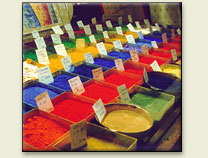 A modern pigment shop in Venice, Italy, where the "traditional" painter can buy pigments to mix into paints themselves.
|
Sunday, March 29, 2009
Pigment Power in Carrot Colors
| Pigment Power in Carrot Colors WHITE | ||||
 Health benefit = None from pigment, but fiber for digestive health Health benefit = None from pigment, but fiber for digestive healthPigment = No pigment, like wild carrot (Queen Anne's Lace) Origin = Northern Europe; 1600's ORANGE 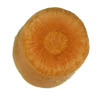 Health benefit=Vitamin A essential for healthy eyes and immune system Pigment = Beta and alpha carotene Origin = Europe and Middle East; 1600's PURPLE OUTSIDE ORANGE INSIDE 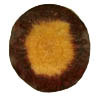 Health benefit = Helps prevent heart disease & strokes, antioxidant ties up harmful free radicals, and vitamin A activity Pigment = Anthocyanin, beta and alpha carotene Origin = Afghanistan, Turkey, and Middle East; 900's RED 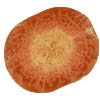 Health benefit = Helps prevent cancer (especially prostate), and vitamin A activity Pigment = Lycopene (another carotenoid) and beta-carotene Origin = India, China, and Japan; 1700's YELLOW 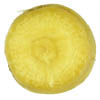 Health benefit = Eye health (especially macular degeneration) and cancer prevention Pigment = Xanthophylls (other carotenoids), especially lutein Origin = Afghanistan, Turkey, and Middle East; 900's | ||||


